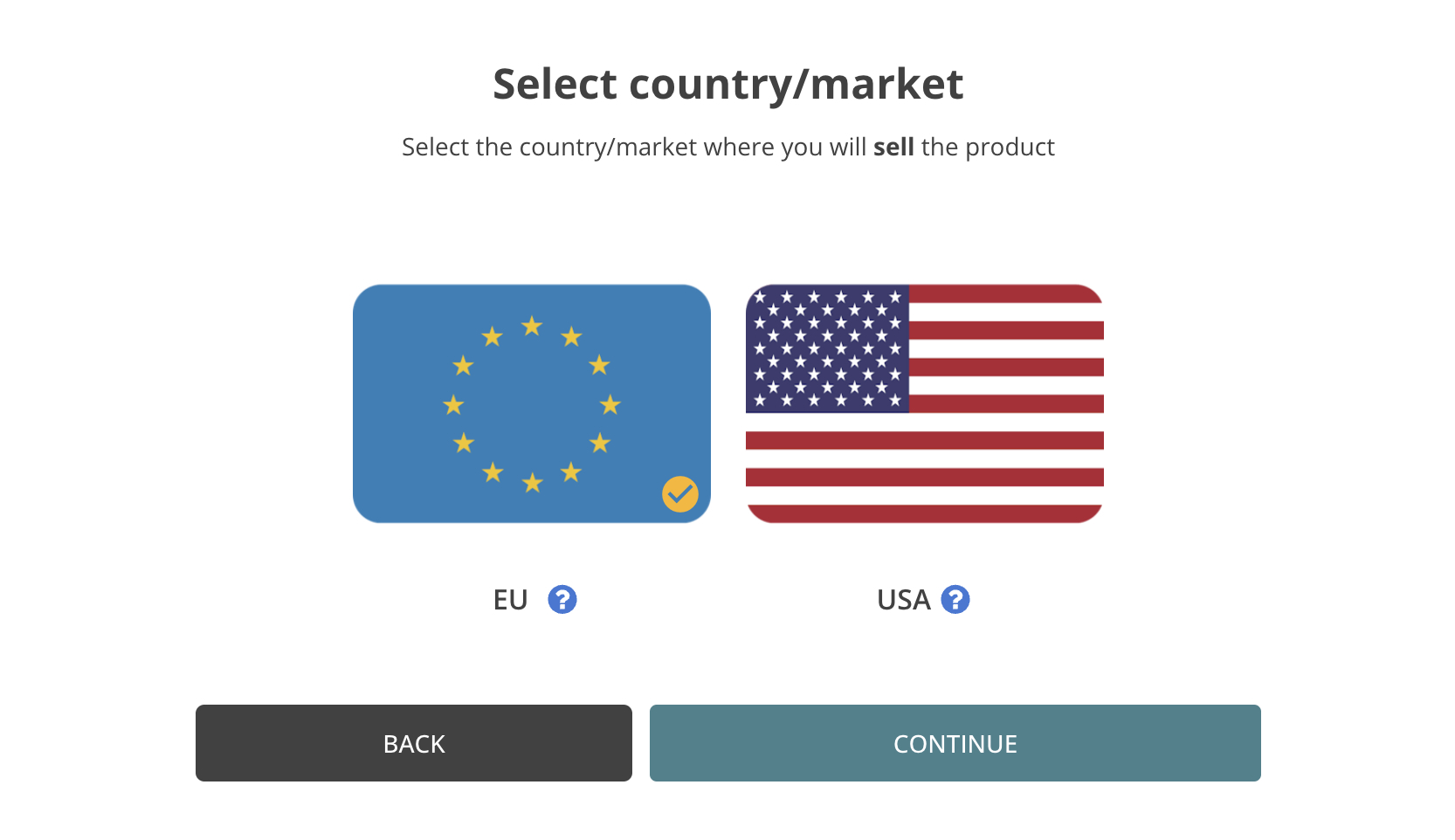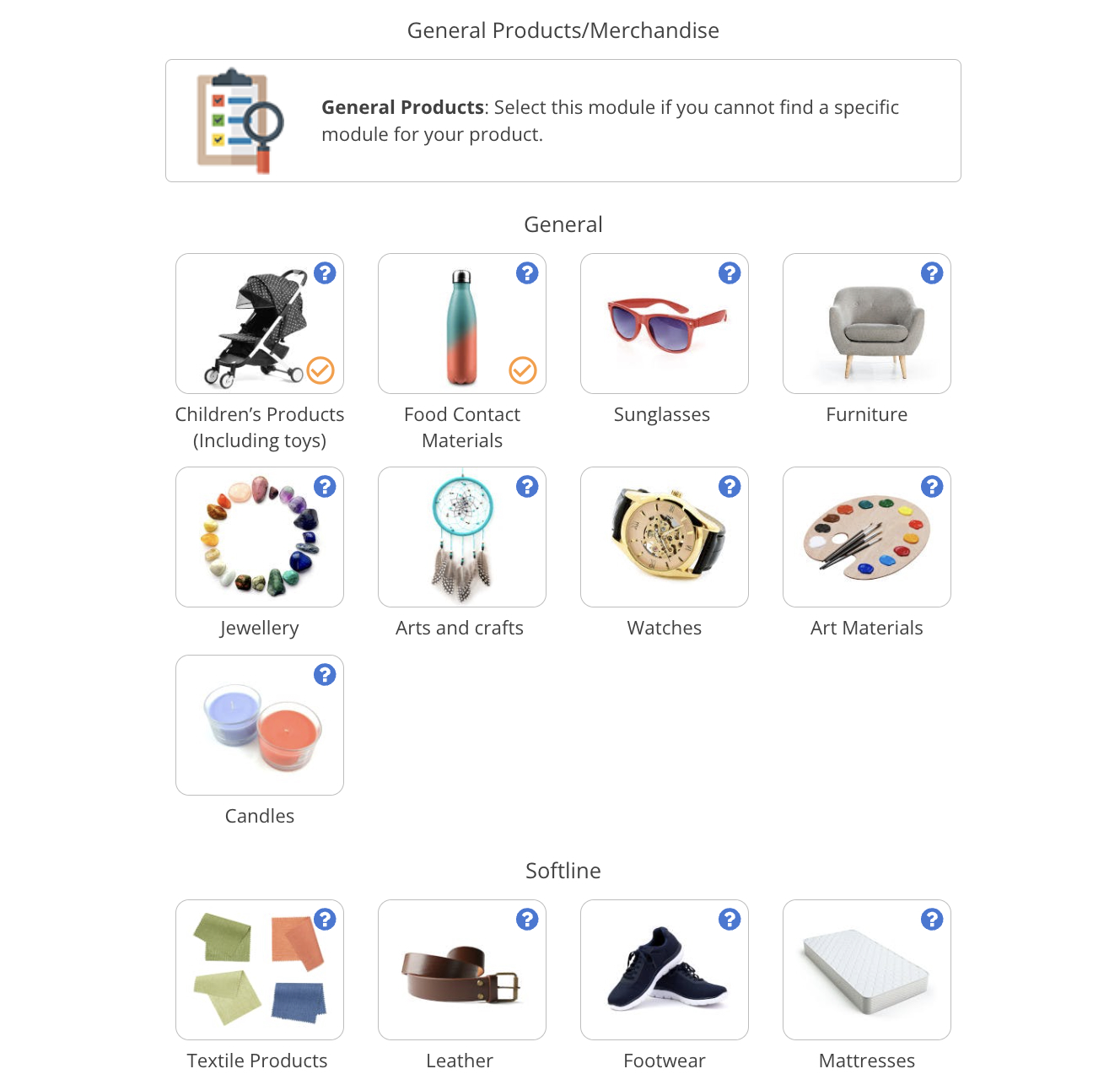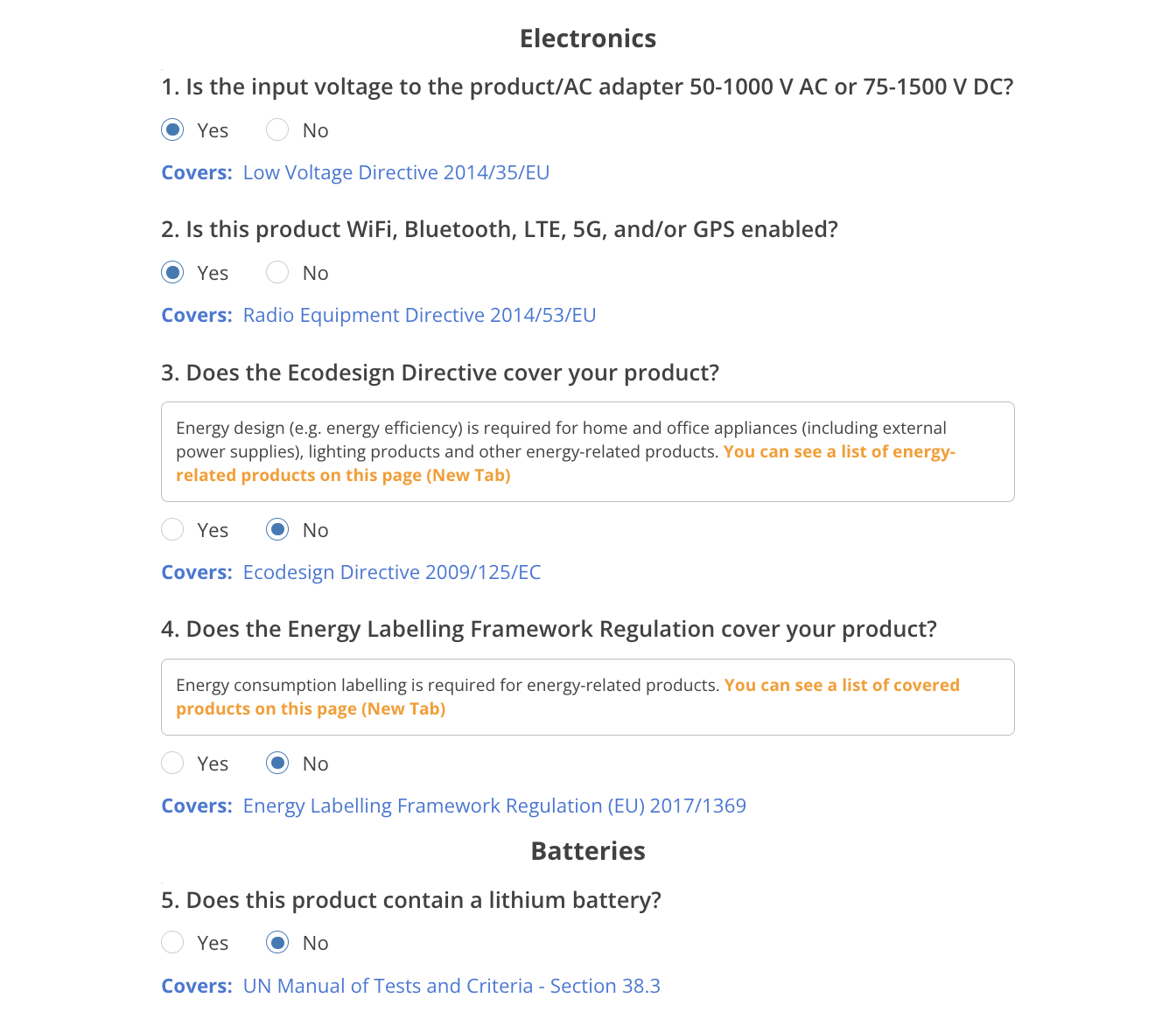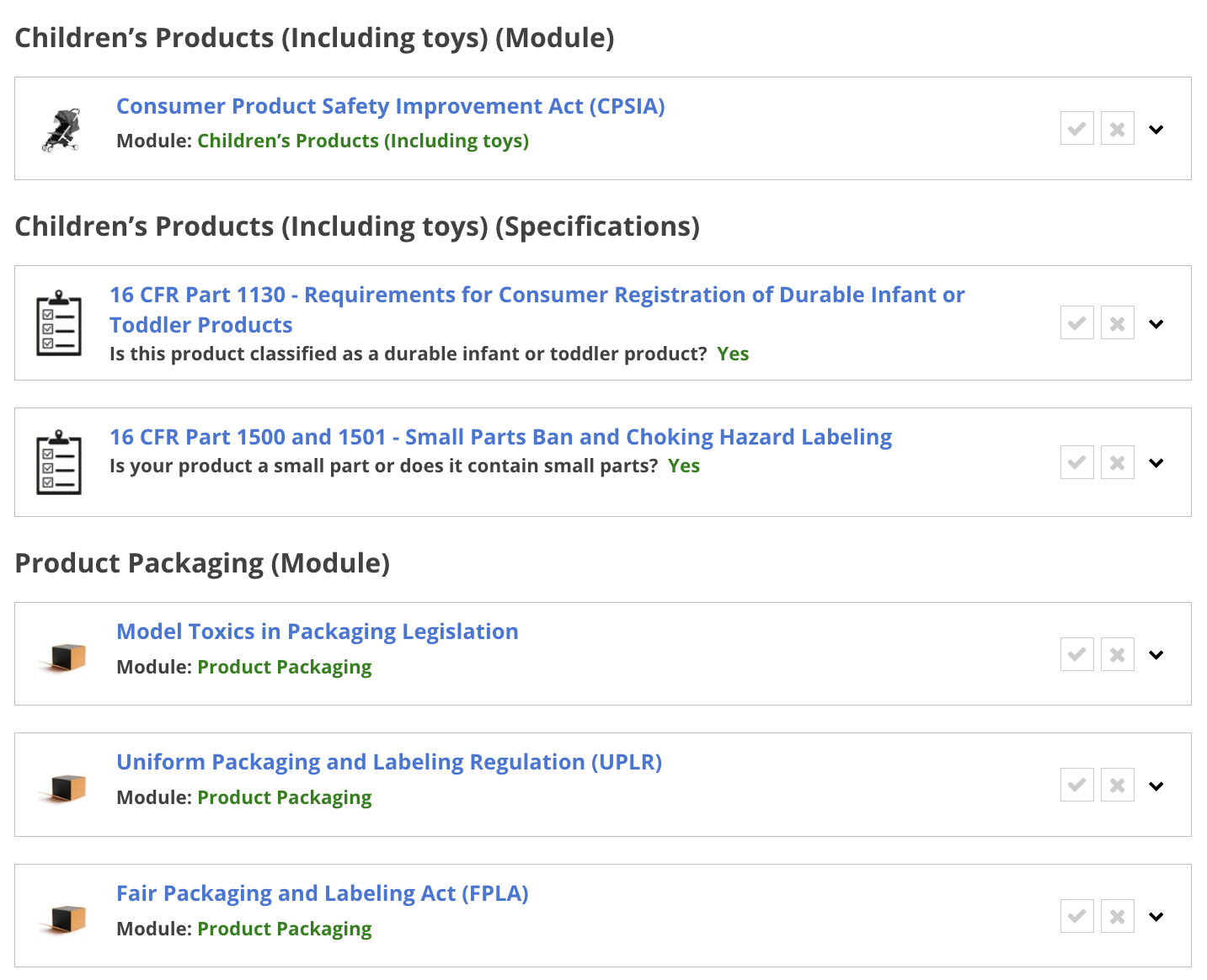Compliance Requirements List
Select all relevant modules for your product
More than one module is often applicable. For example, a battery-powered electronic toy may require that you
select the following modules: Toys, Electronics, Batteries, and Product Packaging.
Can’t find a relevant module?
Select the General Products module if you cannot find a product-specific module.
Risk Disclosure
The Risk Disclosure document explains the features of the Compliance Gate Platform, and their limitations and risks.
What is a Compliance Requirements List?
1. A Compliance Requirements List is an automatically generated document containing summaries of various product regulations and other compliance requirements. The list is generated based on user inputs.
2. A compliance requirements list contains short summaries about various compliance requirements, which generally cover the following:
- Product scope
- Exemptions
- General requirements
- Substance restrictions
- Documentation (if any)
- Labelling (if any)
- Lab testing
- Sources
3. Each summary links to sources for further reading.
4. It serves as a first step towards navigating compliance requirements for a certain product – but this does not mean that a compliance requirements list will “certify” or “make” your product compliant.
How can we benefit from creating a Compliance Requirements List?
Creating a Compliance Requirements List can enable you to research relevant compliance requirements in a matter of minutes, rather than hours. It also gathers information from many different sources that are otherwise time-consuming to find. As such, the primary benefit of this feature is the time it saves you.
It serves as a first step towards navigating compliance requirements for a certain product – but this does not mean that a compliance requirements list will “certify” or “make” your product compliant.
You will still need to ensure that you comply with the relevant regulations, directives, and other compliance requirements. Further, you may need to use other resources to identify requirements not covered by the Compliance Gate Platform.
How do I create a Compliance Requirements List?
It is generated automatically based on the following user inputs:
1. Country/market (i.e., European Union)
2. Product category (i.e., Electronics)
3. Product specifications (i.e., Input voltage range)
How should we use a Compliance Requirements List?
Creating a compliance requirements list serves as a first step toward researching compliance requirements for a certain product and its parameters. This is an example of how a process can work:
1. Create a compliance requirements list.
2. Carefully read the resources provided under Sources for each topic.
3. Use the AI agents to further explore requirements.
4. Request a lab test quotation (to confirm specific tests/standards and other requirements not covered by the list)
5. Contact the relevant consumer safety/market surveillance/other authorities to confirm additional requirements (if any).
6. Create certificates/documents and label files.
Creating a compliance requirements list for the initial step of the process will likely save you many hours. Still, we strongly emphasize that the list is only a first step and requires that you take further action.
Do I need to create one Compliance Requirements List for each product?
Yes, you must create a Compliance Requirements List for each product. However, this is normally not required for different variations of the same product, such as apparel sizes or different colors.
Does a Compliance Requirements List cover all requirements applicable to our product?
Our database is limited to the items listed in these documents:
We do not claim to cover all existing regulations that may apply to a certain product.
Does an entry/summary contain all requirements?
A Compliance Requirements List only contains summaries of regulations, directives, and other compliance requirements. Each summary contains information that we consider to be of particular importance to importers and manufacturers.
However, a summary is only a summary. Removing even a single word from a regulation text means that some context is lost – and even more so when it comes to our summaries which are highly condensed compared to the actual source text. Most summaries only contain 2 to 5% as much information as the full source text.
Furthermore, the summaries are based on the source version available at the time of publication.
As such, we can never claim that a summary covers all requirements that are present in the original source text. This is also why we clearly present the sources and provide links where you can dig deeper into the requirements that may apply to your product.
Can you guarantee that all entries/summaries are free of errors?
We do our best to fact-check the summaries, but given the quantity of information, and that the sources may be updated after publication, we cannot guarantee that the summaries are completely free of error.
How do you keep the Compliance Requirements List up to date?
We review a set list of official sources in the EU and the US each month. You can find more information about which sources we monitor and when we update the Compliance Requirements List database in these documents:
You can also find information about the source versions and update logs for each entry/summary here:
Which sources did you use to create each entry/summary?
Each summary is normally written based on the primary source of a certain regulation, directive, or other compliance requirement. We primarily use the following sources:
We sometimes also include information from guidance pages and FAQs in the summaries.
Do you link to sources?
1. We provide source links under Sources for each entry. We also provide links inside information boxes.
2. We normally link to the primary source of the summary in the US eCFR or the EU EUR-Lex.
At what stage should I create a compliance requirements list?
You should create a Compliance Requirements List as early as possible in the product development process. This is because the list can direct you to relevant product regulations, which contain information about safety, labelling, and testing requirements that have a direct impact on the design and functionality of the product.
Do the Compliance Requirements Lists include standards?
Product standards are sometimes mentioned if these are referenced in a regulation, directive, or compliance requirement. For example, the CPSIA entry/summary mentions ASTM F963. That said, we do not have access to standards and their contents are therefore not included in the entries/summaries.
















